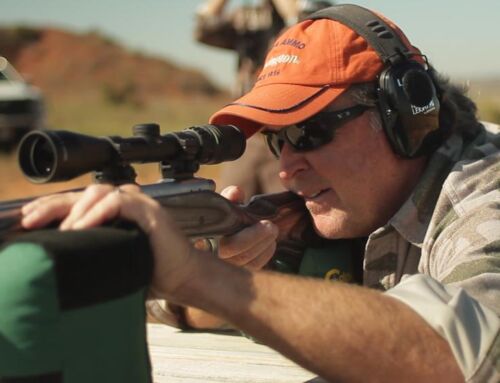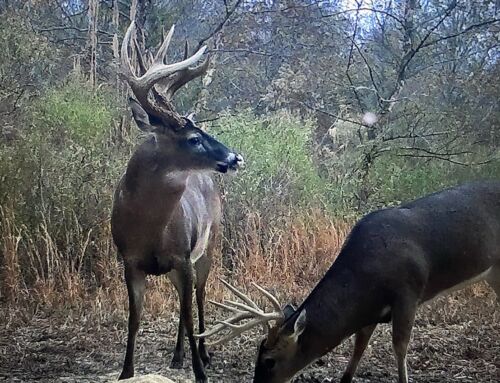Excerpt from Giant Whitetails, which I co-authored with Mark and Terry some years ago. Many people consider this to be one of the most informative books ever published on hunting mature whitetail books. I agree, but then I’m biased. Terry’s words on sheds:
Mark and I have become almost as fanatical about hunting sheds as we are about observing and scouting deer. We’ve learned that when you put the two tactics together, you can really pin down the core areas and specific movements of mature bucks.
We start looking for sheds as soon as the snow melts in late winter. Here in the Midwest, most bucks cast their antlers from the first week of February to the second week of March.
We glass feed fields in late January to see where most of the bucks are hanging out, and how many of them have started to drop their antlers. We try to find sheds as soon as possible, because ground squirrels and other critters can chew off tines in a couple of months. We keep an eye out for sheds as we hunt turkeys in April and plant crops and food plots in May.
Hunt hard for sheds around food plots and crop fields where deer concentrate in the winter. If you’ve got access to standing corn or soybeans, those are dream spots to find fresh sheds.
If you’re still out there glassing in late January or early February, pay close attention to where bucks enter and leave feed fields. A lot of times bucks will walk 100 yards or so and lie down on the first east or south slope. You can often find sheds there.
As a side note, I might add that the only time we step foot into bedding areas, or what we call “sacred grounds,” is when hunting sheds in the spring. When you go in there, look around, analyze the configuration of the cover and look for the easiest ways for a big buck to go in and walk out. That information will come in handy when you come back and hunt nearby next fall.
Most people are pumped if they find one or two big sheds each spring and they should be. Well brother Mark and I are disappointed if, after walking our tails off, we don’t find 30 or maybe even 40.
To hit the mother lode of sheds, you need to look close, real close. We often use a grid search. Mark off a 20-yard grid and cover every inch of it before moving on to the next grid.
Most people look right over sheds. They look way too far out in front of where they’re walking. Take it real slow and look straight down at the ground, scan every square foot. Sometimes you’ll spot a whole antler, or maybe just a tine sticking up. Some sheds are white, while others are brown and blend into the grass and leaves. You’ve got to look close.
There have been times when we actually stepped on a shed or walked right past them. Take the time to turn around and give a quick once over to an area that you have just walked through. A different perspective with a little different lighting can yield huge results.
Rainy days are great for shed hunting. It’s unbelievable how antlers shine when it’s wet. Harsh sunlight is the worst—it makes sheds tough to spot.
We keep every shed we find, from the spikes to the big 4- and 5-point sides. We keep a record of when and where we found them. Every once in a while we pull out the souvenirs, scatter them on the floor and evaluate things. That’s when the patterns of bucks begin to develop.
We’ve found a buck’s sheds 2, 3, even 4 years in a row. And we’ve found some of them in the same 50- to 100-acre patch of timber. That sure tells us a lot about a big deer’s home range and core area. And it sure tells us where we ought to think about hunting the next fall.
On October 26 one year, I shot a giant Iowa buck. I killed him 50 yards from where a friend had picked up his matching set of sheds earlier that spring. Incredibly, the buck had grown 30 inches of antler in that year.






